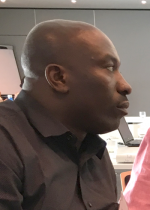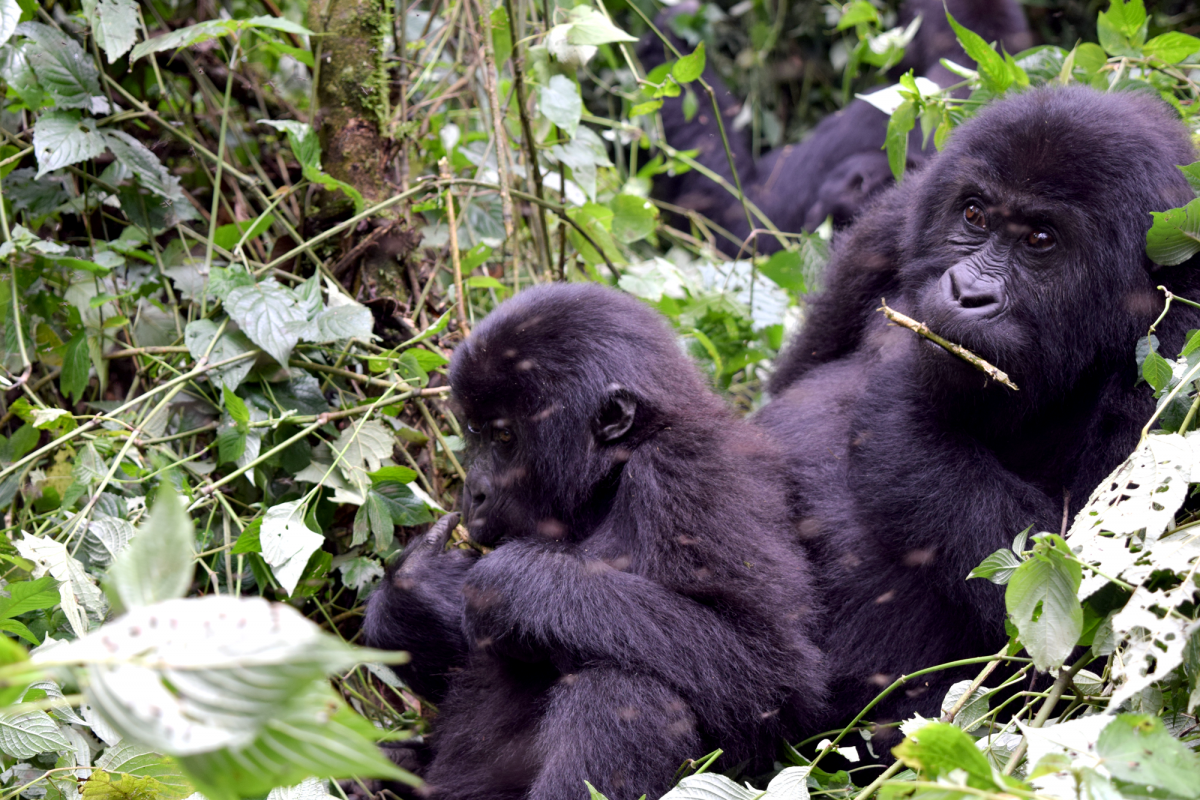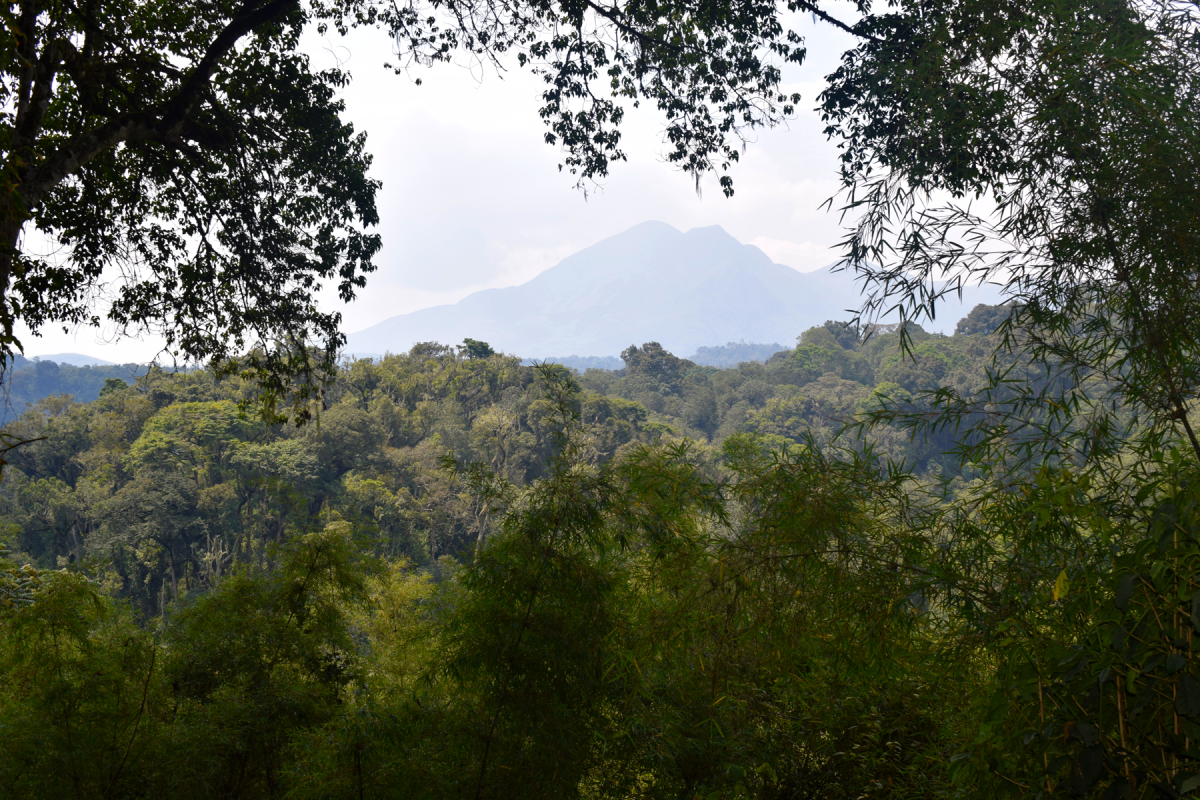The strongest roots are in primary forests: An interview and a mission
They store unrivalled amounts of carbon. They provide the necessities of life to more species than anywhere else on land. They replenish the air, furnish water and enrich the soil. They aren’t just forests – they are primary forests including intact forest landscapes. Dominique Bikaba, of Strong Roots Congo is part of team of experts drafting policy on mainstreaming the importance of these vital ecosystems. He sat down with us to explain what this means for the Democratic Republic of Congo and for conservation.
Primary forests including intact forest landscapes include many forest types and exist throughout the world. Largely found in the Amazon, the boreal area of the northern latitudes, the Congo Basin and in Indonesia; they also exist as fragments in much larger landscapes. These special areas represent about one-third of all remaining forested land, and are irreplaceable and invaluable global assets in terms of biodiversity, carbon sequestration and storage, regulating climate, providing crucial ecological and environmental services, supporting livelihoods and life paths for indigenous peoples, and in aiding human health.
IUCN World Conservation Congress (Hawaii 2018)
Resolution for the protection of primary forests including intact forest landscapes
Not all forests are equal
All forest types are generally treated with equal standing by the international community, from industrial plantations to restored areas – a fact that contributes to the lack of prioritisation of primary forests including intact forest landscapes. This inadvertently undermines the conservation of these special forests, subsequently impacting global biodiversity, climate change, livelihoods and ecosystem benefits. While initiatives to address sustainable forest management and restoration of degraded lands are laudable and important, neglecting to recognise and prioritise primary forest and conservation in these landscapes will end up irreparably reducing the full potential of the world’s forested areas.
Although 12-22% of primary forests including intact forest landscapes are largely safeguarded in protected areas, the remainder is vulnerable to detrimental exploitation. These remaining areas fall within a policy gap where primary forests are not fully recognised by international bodies and, therefore, it is hard to ensure their protection.
It is for these reasons that the members of IUCN came together to create a multidisciplinary task team of primary forest experts to write an official policy in support of these special forests. One such expert, Dominique Bikaba, of Strong Roots Congo explains a little about the importance of primary forests including intact forest landscapes to his work and to the global community at large.
Interview with Dominique Bikaba
 Photo: IUCN
Photo: IUCN
Strong Root's vision is to see local communities, indigenous people and wildlife thrive together in the Democratic Republic of Congo (DRC). Our mission is to save great apes from extinction. Great apes, especially Grauer’s gorilla populations, have dramatically declined by about 77% in the last 20 years.
How does your work bring you in contact with primary forests?
Local communities and indigenous peoples who manage most of the non-protected (community) forests face an array of challenges – most notably a lack of secure land tenure and omission from key conservation decisions which negatively impact their livelihoods. We believe that the best way to conserve biodiversity, and especially primary forests, is to combine scientific tools with traditional knowledge, empowering local communities to manage resources themselves on their traditional lands. Natural resources on which they rely on for subsistence.
We are working on a connectivity project on a landscape which includes different types of ecosystems with different types of management and governance structures (national park, nature reserve and community forests). This corridor project includes seven community forests (3,000 km2), and connects the Kahuzi-Biega National Park and the Itombwe Nature Reserve. Part of this corridor (about 67%) is considered primary forest. An important part of the remaining forest block is composed of secondary forests and fallows, or abandoned lands from subsistence agriculture and mining in a few cases. Since 2010, the project has planted more than 1.3 million trees around Kahuzi-Biega National Park to provide wood sources for local people around the park where the annual population growth rate is 4%, and 98.6 of their fuel comes from wood.
What issues do you see with the management of primary forests in DRC?
Most of the management issues revolve around the lack of legal basis and collective land tenure of customary land and forests. This situation opens doors for extractive industries on traditional lands where communities are in a bad position to negotiate their rights. They are ill equipped when it comes down to approving the “cahier de charge” or “agreements” on what a company will develop in the village. Although some forest friendly laws exist (for some provisions), extractive industries seem to drive natural resources exploitation due to financial incentives they intently promise to the government and officers. The notion of forest categorisations is not legally secured inside DRC, so there is no policy from which to draw to protect primary forests.
Will the resolution that you are working on with IUCN impact people and forests in DRC? How?
Primary forests are unique in species concentrations and distributions – in addition to carbon stocks. Despite investments in resources and policies, the global rate of deforestation and species decline is alarming; which implies a need to revise existing policies and core ways of looking at conservation. An IUCN policy on primary forests including intact forest landscape ecosystems will provide an opportunity for local communities and indigenous peoples to better navigate the management and governance of their traditional lands where the policy applies – in the hope that extractive industries and exploitation of natural resources will be discouraged. Also, I hope that this policy will include language to lobby for the improvement of community livelihoods and funding mechanisms to reduce poverty and maintain these intact forests. Then, hope of a positive impact on people and forests could be expected.
What expertise do you offer in your role with the primary forests task team?
The expertise I offer to this task team is mostly on ways to develop and build forest management and governance capacities for community leaders – creating funding opportunities for local communities and indigenous peoples to secure means for forest communities’ well-being and legal recognition of community forests – while securing collective land tenure for local communities and indigenous peoples.
 Photo: Dominique Bikaba / Strong Roots Congo
Photo: Dominique Bikaba / Strong Roots Congo






